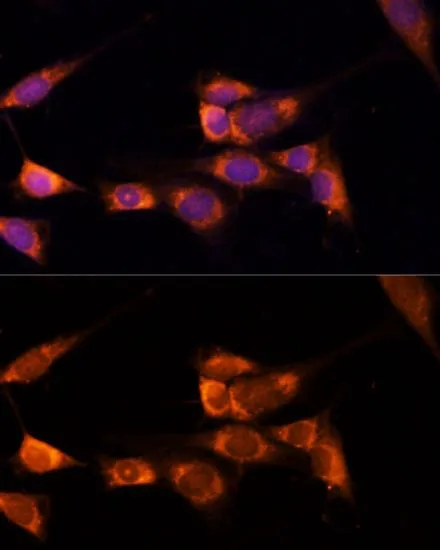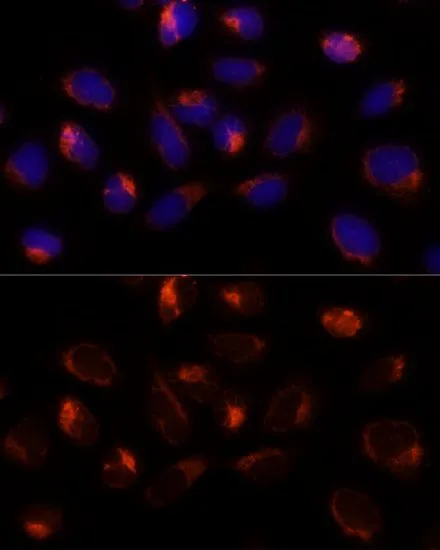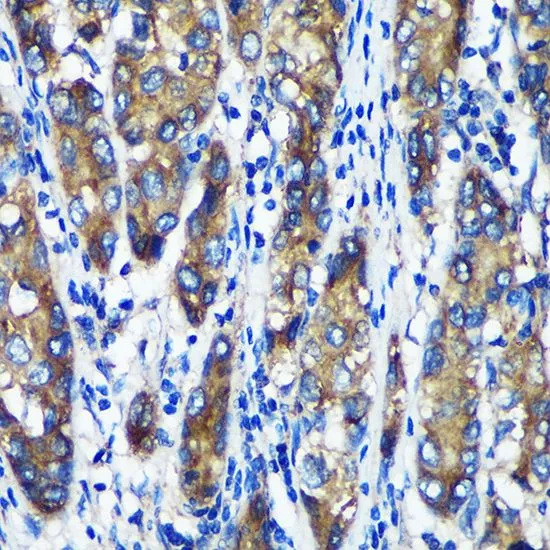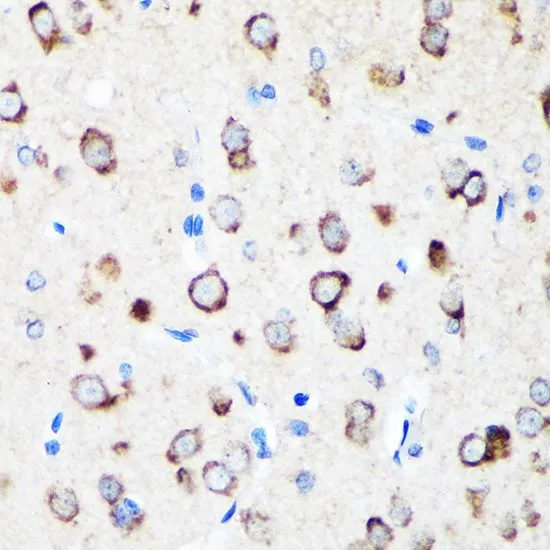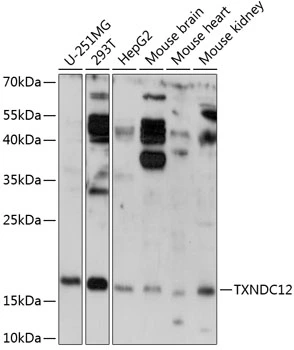
WB analysis of various sample lysates using GTX66255 ERp19 antibody. Dilution : 1:3000 Loading : 25microg per lane
ERp19 antibody
GTX66255
ApplicationsImmunoFluorescence, Western Blot, ImmunoCytoChemistry, ImmunoHistoChemistry, ImmunoHistoChemistry Paraffin
Product group Antibodies
TargetTXNDC12
Overview
- SupplierGeneTex
- Product NameERp19 antibody
- Delivery Days Customer9
- Application Supplier NoteWB: 1:500 - 1:2000. ICC/IF: 1:50 - 1:100. IHC-P: 1:50 - 1:200. *Optimal dilutions/concentrations should be determined by the researcher.Not tested in other applications.
- ApplicationsImmunoFluorescence, Western Blot, ImmunoCytoChemistry, ImmunoHistoChemistry, ImmunoHistoChemistry Paraffin
- CertificationResearch Use Only
- ClonalityPolyclonal
- ConjugateUnconjugated
- Gene ID51060
- Target nameTXNDC12
- Target descriptionthioredoxin domain containing 12
- Target synonymsAG1, AGR1, ERP16, ERP18, ERP19, PDIA16, TLP19, hAG-1, hTLP19, thioredoxin domain-containing protein 12, ER protein 18, ER protein 19, anterior gradient homolog 1, endoplasmic reticulum protein ERp19, endoplasmic reticulum resident protein 18, endoplasmic reticulum resident protein 19, endoplasmic reticulum thioredoxin superfamily member, 18 kDa, protein disulfide isomerase family A, member 16, thioredoxin domain containing 12 (endoplasmic reticulum), thioredoxin-like protein p19
- HostRabbit
- IsotypeIgG
- Protein IDO95881
- Protein NameThioredoxin domain-containing protein 12
- Scientific DescriptionThis gene encodes a member of the thioredoxin superfamily. Members of this family are characterized by a conserved active motif called the thioredoxin fold that catalyzes disulfide bond formation and isomerization. This protein localizes to the endoplasmic reticulum and has a single atypical active motif. The encoded protein is mainly involved in catalyzing native disulfide bond formation and displays activity similar to protein-disulfide isomerases. This protein may play a role in defense against endoplasmic reticulum stress. Alternate splicing results in both coding and non-coding variants. [provided by RefSeq, Mar 2012]
- Storage Instruction-20°C or -80°C,2°C to 8°C
- UNSPSC12352203

